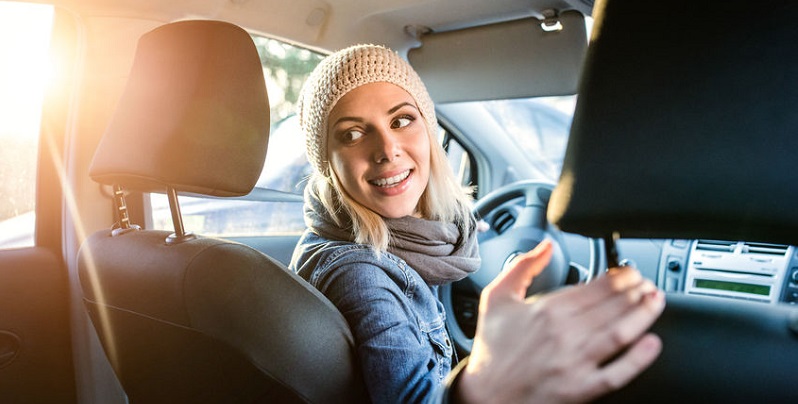In 2015, about 188,000 passenger vehicles were involved in accidents while backing up on public streets. New research indicates that technology could avert more than 75 percent of those crashes.
Rear Auto-Brake Slashes Back-Up Accidents
Because we don’t have eyes in the back of our heads, moving backward is inherently dangerous. This is especially true for those at the steering wheel of a 2-ton car.
Your car’s rearview camera may give you a feeling of unmatched safety while backing up, and rear sensors may add to your confidence. According to new research, however, these safety features show their real effectiveness only when you add park-assist’s rear auto-braking feature to the bundle.
Rearview cameras let drivers see threats or obstacles behind them. Sensors give an alarm when threats, such as moving cars, are near. Rear auto-braking can stop your car to avoid an accident. Although not included in the new research, some park-assist systems will allow the car to park itself.
New research from the country’s most-respected private safety research lab, the Insurance Institute for Highway Safety, and its sister organization, the Highway Loss Data Institute, indicates that cars with a camera or sensor system alone see a reduction in backover accidents in the 20 percent range. Cameras and sensors together produce a 42 percent reduction. With all three safety features, there was a 78 percent reduction in crashes while backing up. The extra margin of safety is too big to ignore.
Automation Overcomes Distracted Driving
Although drivers pull out of parking spaces every day, the routine still forces them to process a lot of information, according to Jessica Cicchino, study author and IIHI vice president for research. Park-assist systems allow drivers to see threats, but the drivers don’t always notice them or respond correctly. Rear auto-brakes provide a large increase in safety because they don’t require drivers to act to avoid an accident.
Cicchino researched police reports collected by the National Highway Traffic Safety Administration and found that in 2015 there were about 188,000 cars and small trucks, vans, and SUVs involved in auto accidents across the United States while backing up. They accounted for 2 percent of all crashes involving passenger vehicles that year. The statistics include only accidents on public roads, so the tally would climb significantly if it included private driveway and parking lot accidents.
The research looked at recent General Motors and Mazda cars and SUVs involved in reverse crashes in 23 states from 2012 to 2015 and compared those with one, two, or three of the safety features. It may be worth noting that the rear auto-brake feature was available only in Cadillacs in the years studied.
Cicchino concluded that if cars and trucks had rearview cameras, sensors, and auto-brake systems that performed like General Motors’, then the United States would eliminate 75 percent of the backing crashes that police handle.
Ratings for Newer Models With Auto-Braking
IIHS, which is known for its “Top Safety Picks,” also released its evaluation of six 2017 models that include the rear auto-brake systems: BMW 5 series sedan, Cadillac XT5 SUV, Infiniti QX60 SUV, Jeep Cherokee SUV, Subaru Outback wagon, and Toyota Prius hatchback. The Cadillac XT5 SUV and the Outback wagon earned “superior” ratings. The others earned lesser “advanced” ratings.
The new systems tested will reduce the chances of having fender-benders, said David Zuby, IIHS vice president.
“Let’s face it,” Zuby said. “Some days we all could use help backing up, whether that’s in a garage with pillars that obscure your view, in a crowded mall parking lot, or on a busy downtown street.”
Warning: Driving Backward Is Inherently Dangerous
Exiting a parking space in a parking lot involves precision driving and a degree of mental focus that people leaving work, home, or school may not have. And consider that drivers’ rear field of vision is the worst, even when craning your neck backward and making full use of rearview mirrors, and even if you do have a rearview camera with a wide lens. Add other drivers and pedestrians, and you have a complete recipe for a minor collision or even a vehicle-pedestrian accident.
And If I Don’t Have Rearview Cameras and Auto-Braking?
Cameras, sensors, and rear auto-braking are not standard equipment; for the most part, they’re costly options on select new models. So until you get them, do the best you can. When leaving your driveway, it’s a good idea first to walk around the back of your car to check for obstructions and children.
Learn to focus on the task and get back into driving mode. Avoid distractions like the radio and your cell phone. Check your mirrors. And when you shift into reverse, release your brakes slowly, carefully, and only when you’re sure. If you’re stopped, then you’re not running into anything.
Some safety experts even encourage drivers to park backward, to back into a parking spot, so that when you leave, nose outward, you’ll have an unobstructed view of what’s ahead.

